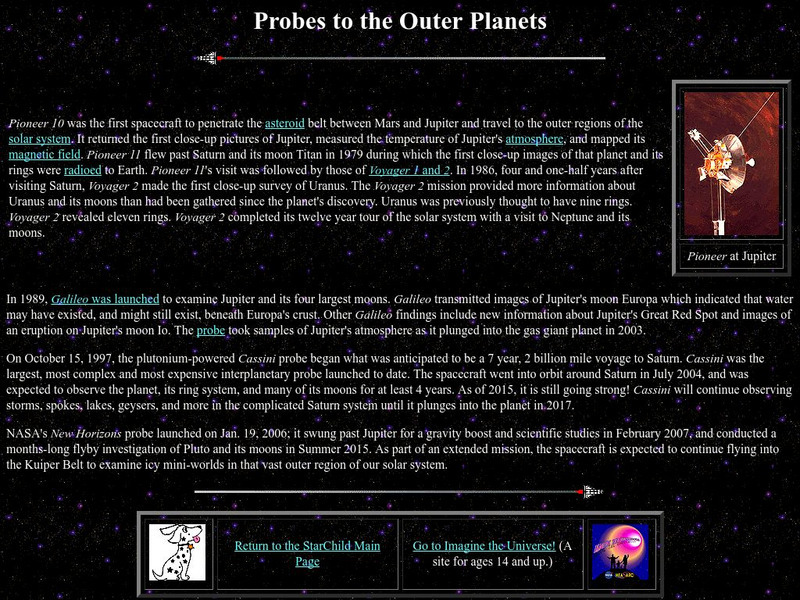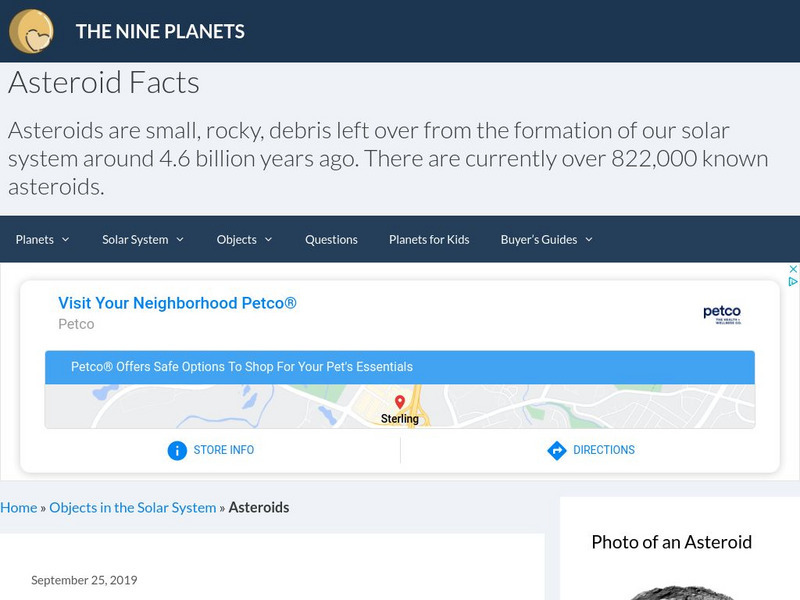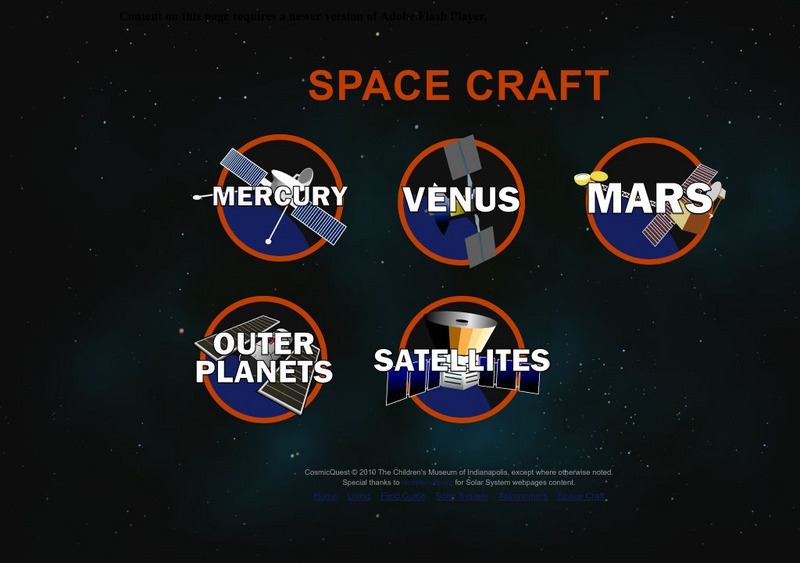Curated OER
Catch a Wave. . .
Part of a larger online space science website, this page has a brief explanation of electromagnetic radiation and a chart of wavelengths as compared to common objects. There are four questions to answer about the information. This can be...
Curated OER
Asteroids!
Learners explore how to visually identify asteroids in SDSS images. They are able to explain that stars are so far away that they do not appear to move, even over the course of a human lifespan. Students identify the location of most...
Curated OER
Memory Techniques
Learners enhance memorization skills by using the following techniques: acrostics, acronyms, number pictures, spelling memory tips, name pictures, grouping, and journey pegs.
Curated OER
Moons
Students practice rote counting to 20. After a lecture about the planets and the moons that surround them, they identify the number of moons surrounding various planets. Students compare and contrast the quantity of moons surrounding...
Curated OER
Asteroids
In this worksheet on asteroids, students look at a picture asteroids and read accompanying facts, along with a brief paragraph.
Curated OER
Sky Watching
Middle schoolers examine telescopes and understand how they have helped us better understand the sky. In this astronomy lesson students complete a worksheet and a lab activity.
Curated OER
Boosting Your Memory
For this memory worksheet, students learn about three different ways to memorize given information. They make up phrases to help remember lists and they create mental maps to remember terms. They put what they learned to the test and...
American Museum of Natural History
American Museum of Natural History: Ology: Astronomy: In Pictures: Beyond Planet Earth
What would it be like to travel across the solar system and explore space? Take a look at some of the places that humans might go to someday, and the questions that scientists are asking.
NASA
Nasa: Astronomy Picture of the Day: Jupiter From Voyager
Taken by Voyager 1 as it passed Jupiter in 1979, this image shows the Great Red Spot, which is a hurricane-like storm that has lasted over 300 years, and is more than three times the size of planet Earth.
NASA
Nasa Star Child: Probes to the Outer Planets (Level 2)
This site has a description of the many probes sent to the outer planets, including pictures and vocabulary words linked to a glossary of terms. Other links on interesting facts and more detailed information are also included.
Nine Planets
The Nine Planets: Asteroids
A plethora of information about Asteroids. This site provides lots of in-text links to information, pictures of asteroids, a table full of information about asteroids, as well as links to more information about asteroids.
Nine Planets
The Eight Planets: Just for Kids
Here is a clear, simple picture of the solar system. Click on the names of the planets to learn more about each. Clicking on underlined terms takes you to more and more detailed scientific information.
Nine Planets
The Nine Planets: Europa
View pictures and links to more information about Jupiter's moon Europa. Links are also provided throughout for additional information on related subjects.
Australian Broadcasting Corporation
Australian Broadcasting Corporation: News in Science: Snapped! Jupiter's Second Red Spot
From ABC News in Science, this article focuses on the discovery of a second red spot on the planet Jupiter. The spot, Red Spot Junior, is discussed in the brief article and is accompanied by a picture.
California Institute of Technology
Spitzer Science Center: Historias Desde Espacio: Premiacion a Las Planetas
All the planets are competing to see who is the best planet in the Solar System. Read the story in Spanish to learn the results of the pageant. Excellent source of information presented in a fun manner.
NASA
Nasa: Surface Maps of the Solar System
Solar system surface map database. Includes maps of all solid planets and many moons. Maps of gas planets are either based on images taken by Voyager, or are fictitious maps including general storm systems.
NASA
Nasa: Solar System
This resource provides a general overview of all the planets in the solar system, as well as the sun, various comets and asteroids, the deep space network, and the latest solar system news.
Space Telescope Science Institute
Hubble Site: Solar System Images
A listing of clickable images of objects in the Solar System from the Hubble telescope that includes the following: Venus, Mars, Jupiter, Jupiter's satellites, Saturn, Saturn's rings and satellites, Uranus, Uranus' rings and satellites,...
NASA
Nasa: Planetary Photojournal: Jupiter
Looking for images of Jupiter or its moons? This is the place to start. Pictures are available from both Voyager missions, Galileo Orbiter and the Hubble Space Telescope. Choose from images of the planet, the ring, any of the Galilean...
Curated OER
Science Kids: Science Images: Jupiter
A large photo of Jupiter, the largest planet in our solar system.
NASA
Nasa: The Space Place
This site from NASA's Space Place is geared towards early elementary learners. It offers detailed instructions for crafts and activities related to space, games and a teacher resource area. Students can also ask an expert at this site.
Children's Museum
Field Guide to the Universe: Space Craft
Pictures and descriptions of the robot spacecraft that have explored the planets and outer space since the 1960s.



















